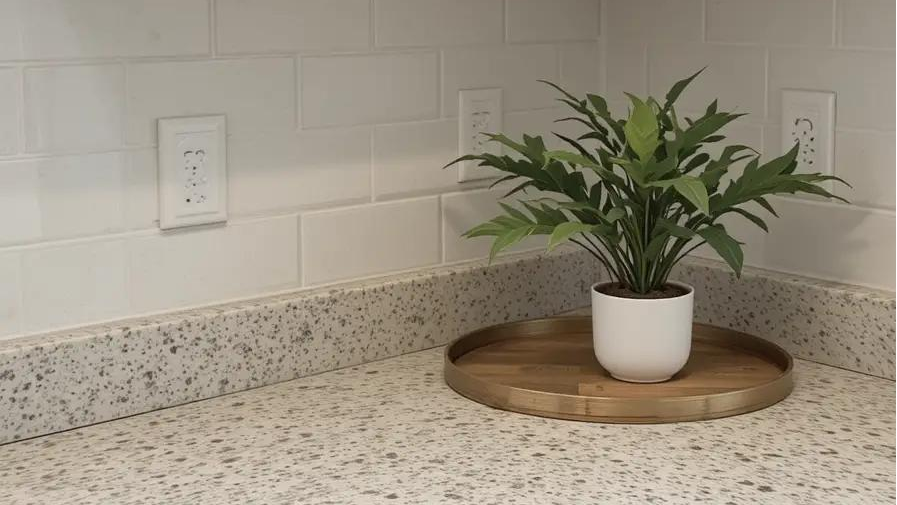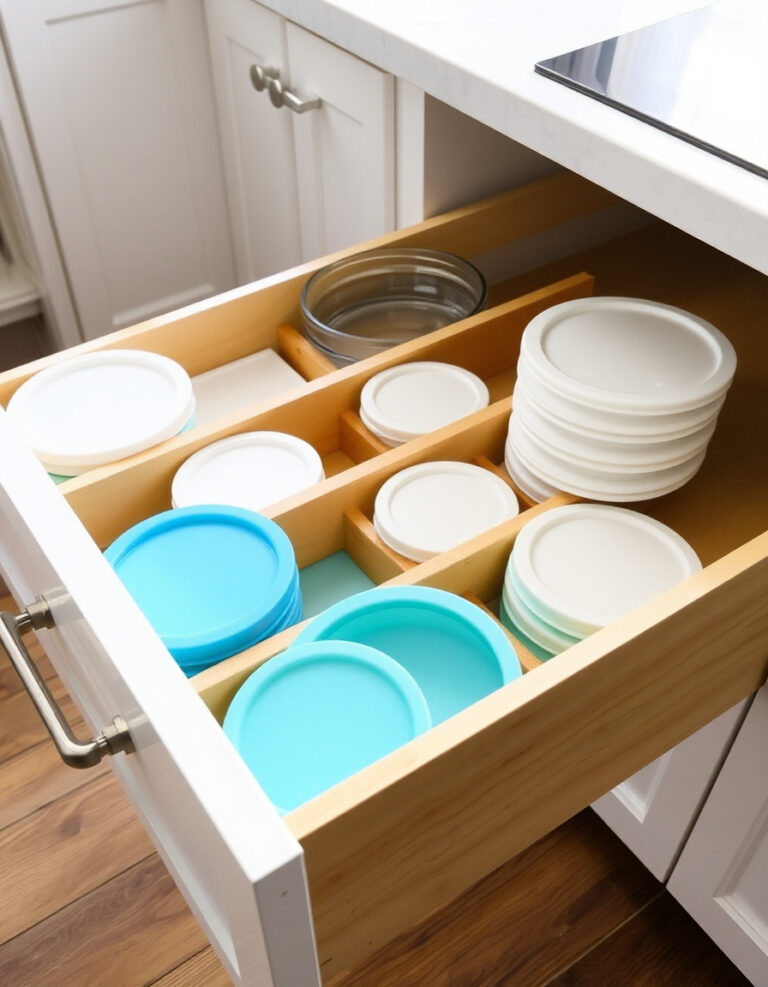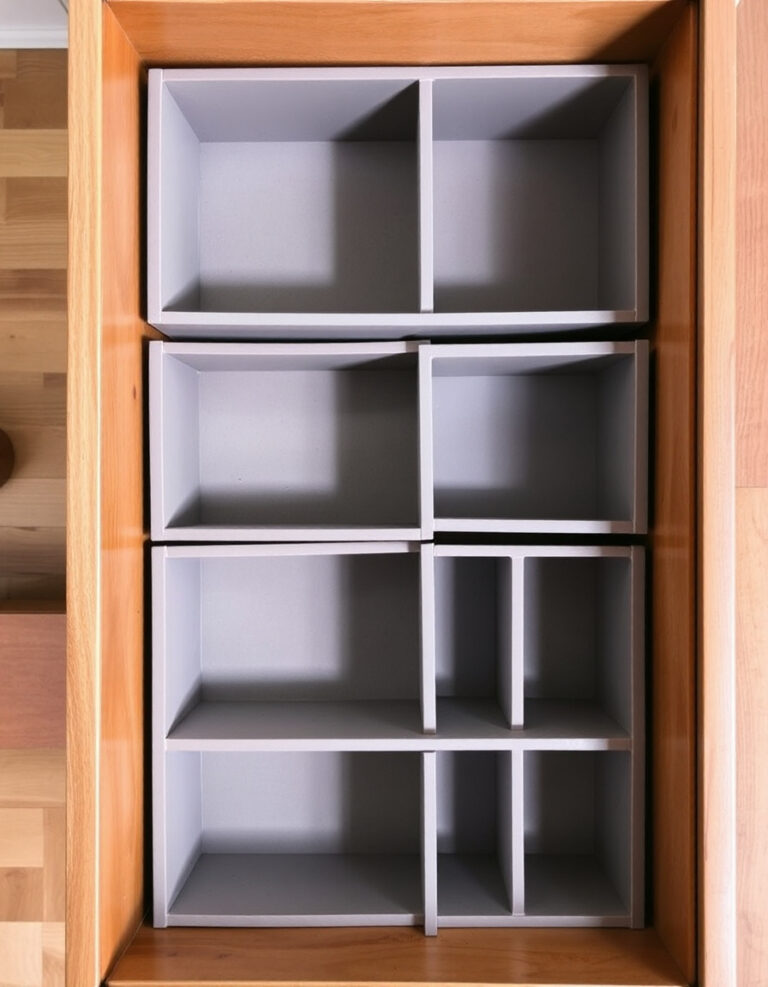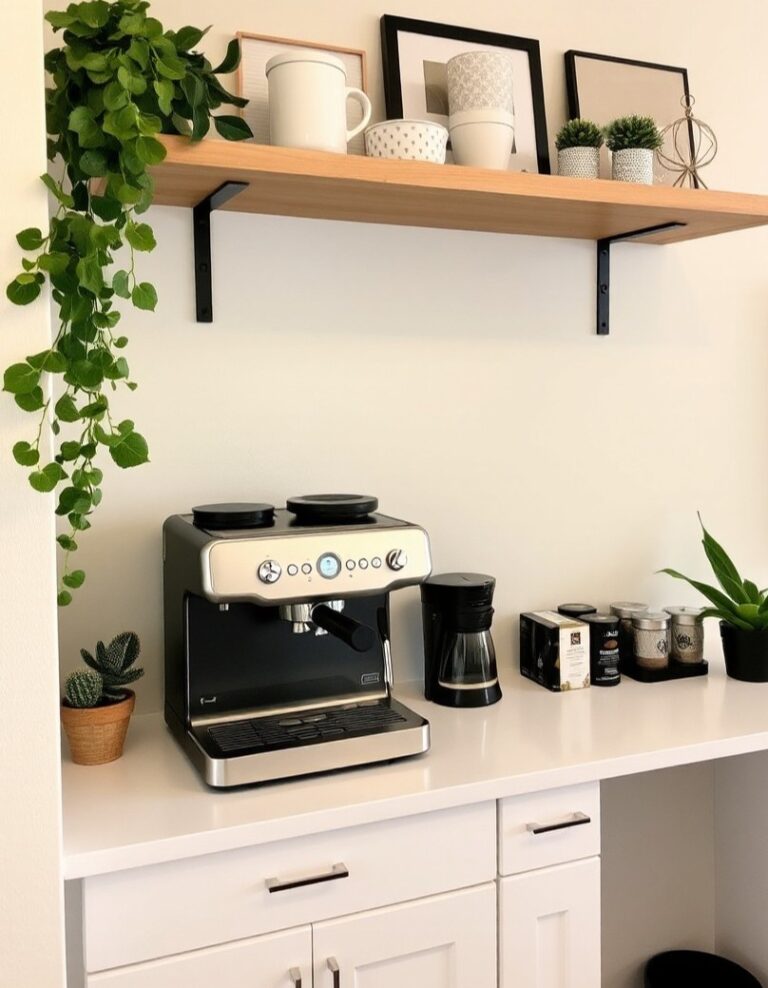Your beautiful wood coffee table doesn’t have to live with unsightly scratches forever. Whether you’re dealing with light surface marks or deeper gouges, learning how to fix scratches on a wood coffee table can restore your furniture’s original beauty without expensive professional repairs. This comprehensive guide walks you through proven methods that work for different scratch types, helping you save money while protecting your investment.
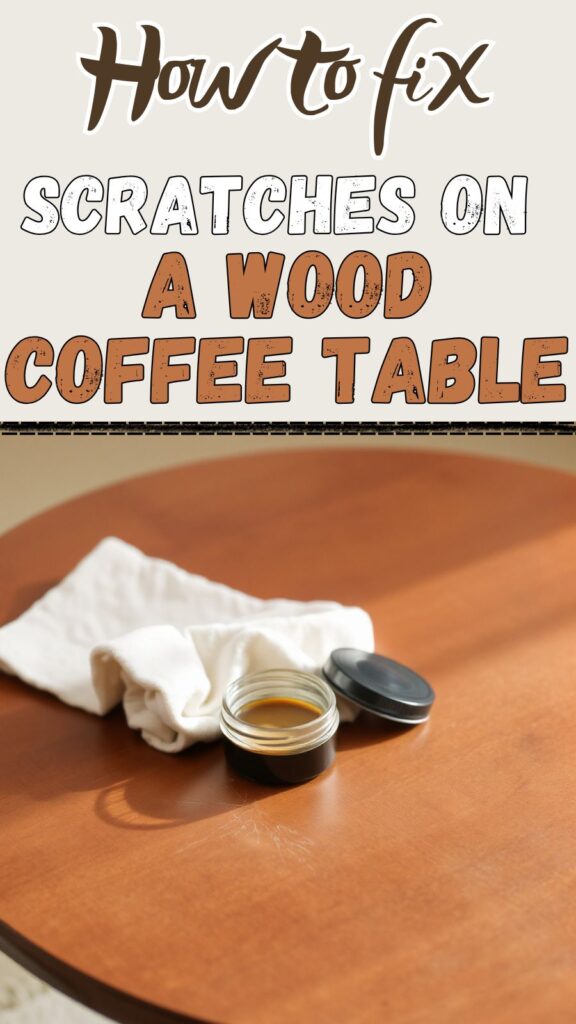
Understanding Different Types of Wood Coffee Table Scratches
Before you begin any repair work, it’s crucial to identify what type of damage you’re dealing with. Wood coffee table scratches generally fall into three categories, each requiring a different approach.
Surface scratches only affect the finish and don’t penetrate the actual wood. These are the easiest to repair and often respond well to simple polishing techniques. You can identify surface scratches by running your fingernail across them – if your nail doesn’t catch, it’s likely a surface-level issue.
Medium-depth scratches go through the finish and into the wood’s top layer. These require more intensive treatment but are still manageable with the right tools and patience. Your fingernail will catch slightly on these scratches.
Deep scratches or gouges penetrate multiple wood layers and may require wood filler or professional attention. These are the most challenging to repair but not impossible with proper technique.
Essential Supplies for Wood Coffee Table Scratch Repair
Gathering the right materials before starting your repair project ensures better results and prevents multiple trips to the hardware store. Here’s what you’ll need for fixing scratches on wood coffee tables:
Basic repair supplies:
- Clean, lint-free cloths
- Fine-grit sandpaper (220-320 grit)
- Wood stain matching your table’s color
- Clear wood finish or polyurethane
- Small artist brushes
For deeper repairs:
- Wood filler or putty
- Plastic putty knife
- Tack cloth for dust removal
Household alternatives:
- Mayonnaise or olive oil for minor scratches
- Walnuts for small surface marks
- Iodine for darker wood tones
- Crayons or markers in matching colors
Having these supplies ready means you can tackle most wood coffee table scratch repair projects without interruption.
Quick Fixes for Light Surface Scratches
Light surface scratches respond well to simple home remedies that you probably already have in your kitchen. These methods work because they temporarily fill or mask the scratch while conditioning the wood.
The mayonnaise method works surprisingly well for minor scratches. Apply a small amount directly to the scratch, let it sit for 15 minutes, then buff with a clean cloth. The oils in mayonnaise help condition the wood and minimize the scratch’s appearance.
Walnut meat is another effective solution for light scratches. Simply rub the meat of a fresh walnut directly along the scratch. The natural oils will help fill and disguise the mark. This method works particularly well on darker wood finishes.
Olive oil and vinegar mixture creates an effective polish for minor surface damage. Mix equal parts olive oil and white vinegar, apply with a soft cloth, and buff in circular motions. This combination cleans while conditioning the wood finish.
These quick fixes for wood coffee table scratches provide immediate improvement and are completely safe for most finishes.
For kitchen storage ideas, see How to Add Storage Around a Sink or Stove.
Professional Repair Methods for Deeper Scratches
When dealing with more substantial damage, professional-grade techniques deliver lasting results. These methods require more time and precision but effectively address how to fix scratches on a wood coffee table permanently.
Sanding and refinishing is the most thorough approach for medium to deep scratches. Start by cleaning the affected area thoroughly. Use 220-grit sandpaper to gently sand along the wood grain, focusing on the scratched area. Gradually expand your sanding area to blend the repair with the surrounding finish.
After sanding, wipe away all dust with a tack cloth. Apply wood stain that matches your table’s color using a small brush or cloth, working in the direction of the grain. Allow the stain to penetrate for the recommended time before wiping away excess.
Wood filler application works best for deep gouges and scratches. Choose a filler that matches your wood’s color, or plan to stain over it. Apply the filler with a putty knife, slightly overfilling the scratch. Once dry, sand smooth with fine-grit sandpaper and apply matching stain and finish.
Steam treatment can raise dented wood fibers in some cases. Place a damp cloth over the scratch and apply a hot iron briefly. The steam may cause the compressed wood to expand back to its original level.
Step-by-Step Wood Stain Matching Process
Getting the perfect color match is crucial for invisible repairs when you’re learning how to fix scratches on a wood coffee table. Poor color matching makes repairs obvious and can decrease your table’s value.
Start by identifying your table’s wood species and finish type. Common coffee table woods include oak, maple, cherry, and walnut, each with distinct grain patterns and natural colors. Take a small sample from an inconspicuous area if possible, or bring clear photos to your local hardware store.
Test stain colors on a hidden section before applying to visible scratches. Many wood stains dry darker than they appear when wet, so allow proper drying time between coats. Keep notes about which products work best for future reference.
Blending techniques help new stain integrate with existing finish. Apply stain in thin coats, allowing each to dry completely. Use a small artist brush for precision work, and always work in the direction of the wood grain.
For wood coffee table scratch repair projects, patience during the staining process prevents costly mistakes and ensures professional-looking results.
Choosing the Right Wood Finish and Protection
The final finish protects your repair work and determines how well it blends with the existing surface. Understanding different finish types helps you make informed decisions for fixing scratches on wood coffee tables.
Polyurethane finishes provide excellent durability and water resistance, making them ideal for coffee tables that see daily use. They’re available in satin, semi-gloss, and gloss sheens. Match your table’s existing sheen for best results.
Lacquer finishes dry quickly and provide a smooth, hard surface. However, they require good ventilation during application and may not be compatible with all existing finishes. Always test compatibility in an inconspicuous area first.
Oil-based finishes penetrate the wood and provide natural protection while enhancing grain patterns. They’re easier to touch up later but may require more frequent maintenance than surface finishes.
Apply finish in thin, even coats using a high-quality brush or foam applicator. Sand lightly between coats with very fine sandpaper to ensure smooth adhesion. Most wood coffee table scratch repair projects benefit from at least two finish coats.
Prevention Tips to Avoid Future Coffee Table Damage
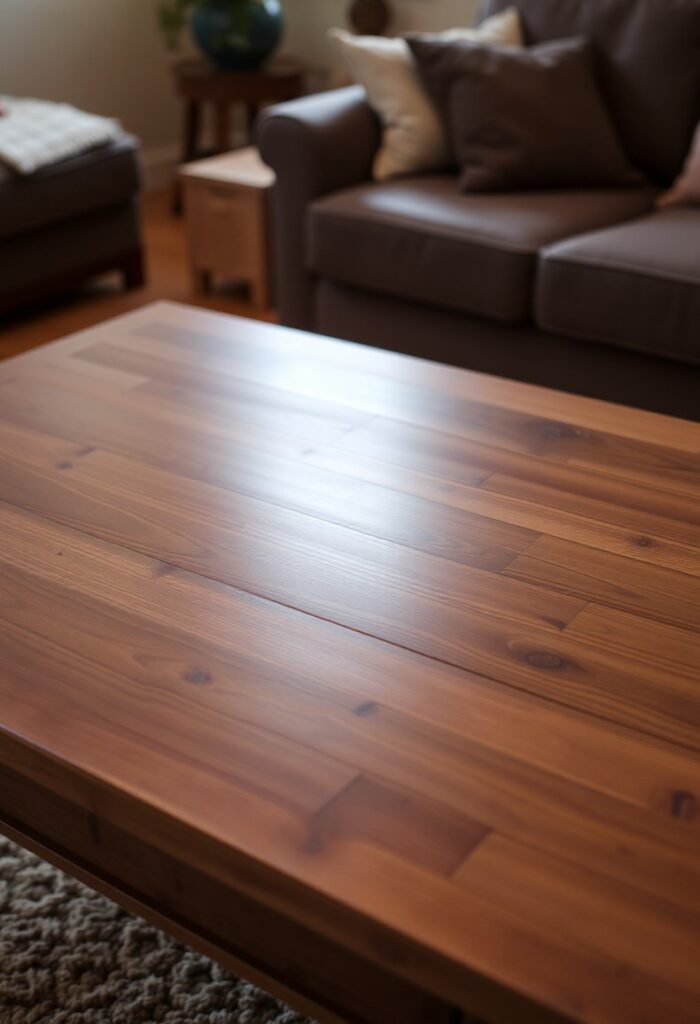
Preventing scratches is always easier than repairing them. Implementing protective measures keeps your wood coffee table looking beautiful longer and reduces the need for future scratch repair on wood coffee tables.
Use protective coverings during daily activities. Place coasters under all drinks, use placemats or table runners during meals, and consider a glass top for high-traffic tables. These simple steps prevent most surface damage.
Establish house rules about what can be placed on your coffee table. Avoid dragging items across the surface, and always lift rather than slide objects. Keep sharp or abrasive items away from the wood surface.
Regular maintenance keeps your table’s finish healthy and more resistant to damage. Dust weekly with a microfiber cloth, and apply quality wood conditioner every few months. This routine maintenance makes your table more resilient and easier to repair when damage occurs.
Strategic furniture placement protects your table from accidental damage. Keep it away from high-traffic areas where it might be bumped, and ensure adequate clearance around all sides for safe navigation.
You have an open kitchen layout and want to hide clutter? see How to Hide Clutter in an Open Kitchen Layout.
When to Call Professional Wood Restoration Services
While many wood coffee table scratches can be successfully repaired at home, some situations require professional expertise. Knowing when to seek help prevents further damage and ensures proper restoration.
Consider professional services for antique or valuable pieces where amateur repairs could significantly impact value. Professionals have specialized tools and experience with different wood species and historical finishing techniques.
Extensive damage covering large areas or multiple deep scratches often requires professional-grade equipment and expertise. The cost of professional repair may be justified when compared to replacing a quality piece.
Unusual wood species or specialized finishes may require expert knowledge for proper repair. Some exotic woods react differently to common repair products, and professionals understand these nuances.
Structural damage beyond surface scratches, such as loose joints or water damage, requires professional assessment and repair to ensure safety and longevity.
Remember that quality wood coffee table scratch repair preserves your furniture investment and maintains your home’s aesthetic appeal. Whether you tackle repairs yourself or hire professionals, addressing damage promptly prevents further deterioration.
Transform Your Scratched Coffee Table Into a Showpiece Again
Don’t let scratches diminish the beauty of your wood coffee table any longer. With the right approach and techniques, you can restore your furniture to its former glory while building valuable DIY skills. The methods outlined in this guide provide options for every skill level and budget, from simple household remedies to professional-grade repairs.
Your coffee table serves as the centerpiece of your living space, and it deserves to look its best. Start with the assessment techniques described here, gather your supplies, and begin with the simplest method appropriate for your damage. Remember that patience and attention to detail make the difference between obvious repairs and invisible restoration.
Frequently Asked Questions
What’s the fastest way to fix light scratches on a wood coffee table? For minor surface scratches, try the walnut method first. Simply rub fresh walnut meat along the scratch – the natural oils help fill and disguise the mark within minutes. This method works especially well on darker wood finishes and requires no special tools or supplies.
Can I use wood filler on all types of wood coffee table scratches? Wood filler works best for medium to deep scratches that penetrate beyond the finish into the actual wood. It’s not necessary for surface-level scratches and may actually make light damage more noticeable. Always test filler in an inconspicuous area first to ensure color compatibility.
How long should I wait between applying stain and finish when repairing scratches? Allow wood stain to dry completely according to manufacturer instructions – typically 4-6 hours for water-based stains and 8-12 hours for oil-based products. Environmental factors like humidity and temperature affect drying times, so err on the side of caution to prevent finish adhesion problems.
Will scratches on my wood coffee table get worse if I don’t repair them immediately? Surface scratches won’t worsen on their own, but they can collect dirt and debris that makes them more noticeable over time. Deeper scratches may allow moisture to penetrate the wood, potentially causing swelling, staining, or more extensive damage. Address visible scratches promptly for best results.
Is it worth fixing scratches on an inexpensive wood coffee table? Even budget-friendly tables benefit from scratch repair, especially if the damage is minor and you enjoy DIY projects. Simple fixes like the mayonnaise or walnut methods cost almost nothing and can significantly improve your table’s appearance. Consider replacement only if repair costs approach the table’s value.

